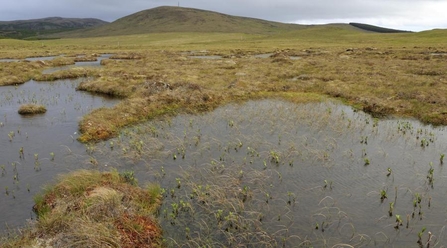The Scottish Government has published its budget for 2020/21 in which it provides £20 million for peatland restoration and a commitment to invest £250 million over the next ten years. This has been agreed as part of the Scottish Governments commitment to nature-based solutions to the climate crisis and described as “an absolute game changer for CO2 emissions reductions, biodiversity and the rural economy” by Roseanna Cunningham, Cabinet Secretary for Environment, Climate Change and Land Reform.
This increase on funding from last year is a welcome move and the longer-term commitment to funding will help those planning large scale peatland projects over several years. It also gives assurance to the restoration contractors and businesses who have to organise staff and other resources that it is worth investing in this important work.
£20 million a year can secure on average 20,000ha of peatland restoration and there has been great progress with over 90,000ha already under restoration management in Scotland but more is needed if we are to urgently tackle the huge extent of peatland damage across the country – damaged UK peatlands emit an estimated 23 Mt CO2e per year which is equal to half the emissions from agriculture and around 4.5% of UK total emissions. The private business sector has a key role in complimenting government funding through investing in peatland projects to help us reach our peatland restoration goals in time. Market mechanisms may be used to pay for the carbon benefits in the long term with the increased use of blended finance through mechanisms such as the Peatland Code. The clear funding commitment from the Scottish Government helps private businesses to see that this is an important and legitimate climate action and sets a positive message that could help stimulate further effort among other peatland nations, particularly as Scotland will be hosting the next global climate change talks at COP26 in Glasgow in 2020.

